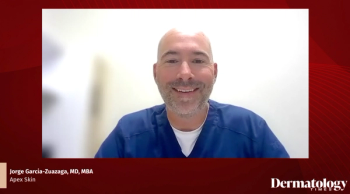
- Dermatology Times, July 2018 (Vol. 39, No. 07)
- Volume 39
- Issue 7
Non-physician operators target of most legal action for laser procedures
There is increasing patient injury and legal action from cutaneous laser surgery, particularly when performed by non-physicians.
There is increasing patient injury and legal action from cutaneous laser surgery, particularly when performed by non-physicians and especially when performed outside of traditional medical settings such as medical spas, a study shows.
“In fact, non-physician operators account for the majority of cases of legal action,” says principal study author Saami Khalifi an, M.D., dermatology fellow, Massachusetts General Hospital. He presented fi ndings earlier this year at the annual conference of the American Society for Laser Medicine and Surgery (ASLMS) in Dallas.
The study, which culled data from a single online legal database, WestlawNext (now renamed Thomson Reuters Westlaw), from 2012 to 2017, is consistent with the results of previous research by Dr. Khalifian and his colleagues about trends in litigation for cutaneous laser srgery from 1985 to 2012.
“Since about 2008 there has been an increasing trend in a higher proportion of cases being performed by physician extenders and non-physician operators,” Dr. Khalifian tells Dermatology Times. “Despite physicians acting as supervisors and not as the actual laser operator, they are named as defendants in legal claims.”
Laser rejuvenation recently edged out laser hair removal as the most litigated laser procedure, encompassing fractionated and non-fractionated, ablative and nonablative resurfacing, and intense pulsed light (IPL).
“The laser rejuvenation modalities, particularly the ablative resurfacing lasers, are associated with potentially more risk and require more skill to perform safely and correctly,” he said. “The caveat, though, is that laser rejuvenation is an umbrella term that includes several diff erent types of laser procedures, whereas laser hair removal is just one type of procedure. The current study found 15 litigated cases for rejuvenation and 14 cases for hair removal. But if you separated rejuvenation into individual procedures, I suspect you would find that hair removal is still the number one 1 litigated procedure.”
For cutaneous laser surgery in general, cases performed by non-physicians were most likely to result in legal action, regardless of the supervising physician’s subspecialty. In the current study, 66 percent of all legal suits occurred when non-physician operators performed the surgery.
“Cases involving medical spas uniformly had unsupervised non-physician operators in non-medical office settings and therefore had one of the highest litigation rates and number of cases,” Dr. Khalifi an said. “What is interesting about these fi ndings, however, is that medical spas that are run by non-physicians are also less likely to have medical liability insurance to satisfy a potential malpractice claim and hence, would be less likely to be pursued by a plaintiff ’s attorney.”
The number of patient injuries at a medspa is likely underrepresented due to the lack of malpractice insurance. In 22 percent of identified claims, physicians were alleged to have caused patient injury. Dermatologists and plastic surgeons each represented about 6 percent of these overall claims.
The two leading causes of legal action among the 32 cases with public decisions were negligence and lack of informed consent, representing 50 percent and 34.4 percent of cases, respectively.
Other causes were breach of contract (6.3 percent), battery (6.3 percent), personal injury (6.3 percent), fraud (3.1 percent), negligent misrepresentation (3.1 percent), improper service (3.1 percent) and other malpractice (18.8 percent).
Burns, pigmentary alterations and scarring were the three most frequent injuries sustained (with some cases involving more than one type of injury) for a total of 56 injuries, representing 75 percent, 46.9 percent and 37.5 percent of injuries overall, respectively. Other injuries included pain and suff ering (9.4 percent), ocular injury (3.1. percent) and missed neoplasm (3.1 percent). “Letting a patient know in advance through informed consent that a burn or dyschromia is possible might have reduced the number of litigated cases,” Dr. Khalifi an said.
Of the 32 cases with a public decision, 53 percent had judgments in favor of the plaintiff, with indemnity payments ranging from $2,245 to $1.5 million. The mean and median payments were $318,000 and $142,000, respectively.
“The total data compiled since 1985 repre-sents a relatively large sample size, spanning three decades in almost every U.S. state, and highlights the current legal framework, precedent and jurisprudence surrounding energy-based device litigation,” he said. “The data on allegations and causes of legal action should serve as a guide to help improve patient safety and decrease professional liability.”
Because injuries will likely continue to occur, physicians seeking to undertake laser surgery in their practice should ensure they have proper training in the physics, safety and techniques of each procedure.
“Legal precedent has demonstrated that non-physicians performing laser surgery are expected to have appropriate training to use energy based devices safely and provide the same standard of care that one would reasonably expect from a physician performing the same procedure,” Dr. Khalifi an said. “Therefore, physicians who delegate laser operations to their non-physician agents must understand that they are ultimately responsible for the actions of their agents and should determine what their local and state reg-ulations are regarding the type of supervision required for such delegation to occur.”
It is critical that physicians take steps to mitigate risk to patients by ensuring robust and adequate training for their agents and by directly supervising procedures.
“Our data clearly shows that these treatments are performed safest by physicians directly who have had dedicated training in laser and light sources,” he said.
In terms of study limitations, this study was limited to one legal database with cases restricted to those where legal action actually commenced. It does not include cases settled through arbitration.
Articles in this issue
over 7 years ago
Pricing patients out of healthcare?over 7 years ago
Image IQ: When is a biopsy required?over 7 years ago
Rare tumors and fibrotic skin lesionsover 7 years ago
New Drugs Roundup: Dermatologyover 7 years ago
The top 7 mobile apps in dermatologyover 7 years ago
Medicine no longer apoliticalover 7 years ago
I use social media and now I might lose my license?over 7 years ago
Complications low with chemical peels in darker skinover 7 years ago
Where full-field erbium outshines fractionalNewsletter
Like what you’re reading? Subscribe to Dermatology Times for weekly updates on therapies, innovations, and real-world practice tips.

















